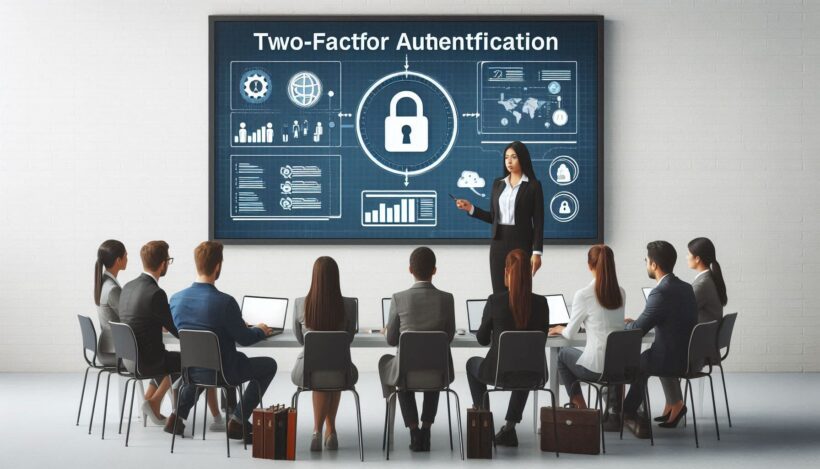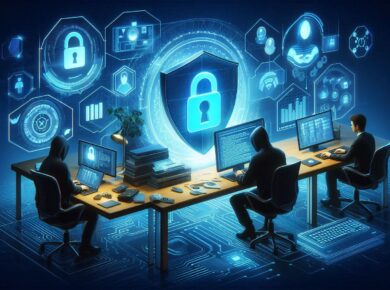Table of Contents
In an era where digital security is paramount, two-factor authentication (2FA) stands out as a crucial tool for enhancing protection against unauthorized access. As cyber threats continue to evolve and grow more sophisticated, implementing 2FA has become a non-negotiable aspect of safeguarding personal and organizational information. This article explores the significance of 2FA, how it works, and why you should consider adopting it to secure your digital life.
1. What is Two-Factor Authentication?
Two-factor authentication is a security process that requires two different forms of identification to access an account or system. By combining something you know (like a password) with something you have (like a smartphone or hardware token), 2FA adds an extra layer of security.
1.1 The Components of 2FA
- Knowledge Factor: This is typically your password or PIN.
- Possession Factor: This could be a text message with a code, an authenticator app, or a physical token.
2. Why is Two-Factor Authentication Important?
In today’s digital landscape, relying solely on passwords is no longer sufficient. Passwords can be weak, reused, or stolen, making them vulnerable to attacks.
2.1 Protecting Against Password Theft
- Mitigating Risks: Even strong passwords can be compromised through phishing, data breaches, or brute-force attacks. 2FA mitigates these risks by requiring an additional verification step.
- Example of Breaches: High-profile breaches have shown that attackers can easily obtain user passwords. Without 2FA, accounts remain at risk.
2.2 Enhancing Account Security
- Increased Security: 2FA drastically reduces the likelihood of unauthorized access. Even if someone acquires your password, they would still need the second factor to gain entry.
- Peace of Mind: Knowing that you have an additional layer of security can provide peace of mind, especially for sensitive accounts like email, banking, and social media.
3. Common Forms of Two-Factor Authentication
There are various methods for implementing 2FA, each with its own level of security and convenience.
3.1 SMS Verification
- How It Works: After entering your password, you receive a text message with a verification code that you must enter to log in.
- Pros and Cons: While SMS is widely used, it is vulnerable to interception and SIM swapping attacks.
3.2 Authenticator Apps
- Overview: Apps like Google Authenticator and Authy generate time-sensitive codes that serve as the second factor.
- Advantages: Authenticator apps are generally more secure than SMS, as they do not rely on your mobile network.
3.3 Hardware Tokens
- Description: These are physical devices that generate codes or use USB ports to provide authentication.
- Security Level: Hardware tokens offer one of the highest levels of security since they are immune to phishing and online attacks.
4. How to Set Up Two-Factor Authentication
Setting up 2FA can vary by platform, but the process is generally straightforward.
4.1 Step-by-Step Guide
- Access Account Settings: Log into your account and navigate to the security settings.
- Enable 2FA: Look for the option to enable two-factor authentication.
- Choose Your Method: Select your preferred method (SMS, authenticator app, or hardware token).
- Verify Your Choice: Follow the prompts to verify your chosen method and ensure it is set up correctly.
4.2 Considerations for Multiple Accounts
- Uniformity: Consider enabling 2FA on all your accounts, not just the most sensitive ones.
- Backup Codes: Many platforms provide backup codes when you enable 2FA. Store these codes securely, as they can help you regain access if you lose your second factor.
5. Challenges and Limitations of Two-Factor Authentication
While 2FA significantly enhances security, it’s not without challenges.
5.1 User Resistance
- Inconvenience Factor: Some users may resist implementing 2FA due to the additional steps required during login.
- Education: It’s essential to educate users on the importance of 2FA to encourage adoption.
5.2 Potential for Lockouts
- Access Issues: If a user loses access to their second factor (like a lost phone), they may find it challenging to log in.
- Recovery Plans: Users should have a recovery plan in place, such as backup codes or alternative verification methods.
6. The Future of Two-Factor Authentication
As cyber threats continue to evolve, so will two-factor authentication.
6.1 Innovations in 2FA
- Biometric Authentication: Fingerprint scanning and facial recognition are becoming more common as second-factor methods, providing enhanced security.
- Adaptive Authentication: Future 2FA may leverage AI to assess risk levels and determine when additional verification is necessary.
6.2 Broader Adoption
- Industry Trends: As awareness of cybersecurity threats grows, more companies and users are likely to adopt 2FA as a standard security measure.
- Regulatory Influence: Increased regulations around data protection may further encourage the implementation of two-factor authentication across various sectors.
Conclusion
Two-factor authentication is a vital component of modern cybersecurity. By requiring an additional verification step, 2FA significantly enhances the security of your accounts and personal data. As threats evolve and cybercriminals become more sophisticated, adopting 2FA is not just advisable; it’s essential. Take the time to implement this crucial security measure and enjoy greater peace of mind in your digital interactions. Your data is worth protecting, and two-factor authentication is one of the best ways to do just that!






